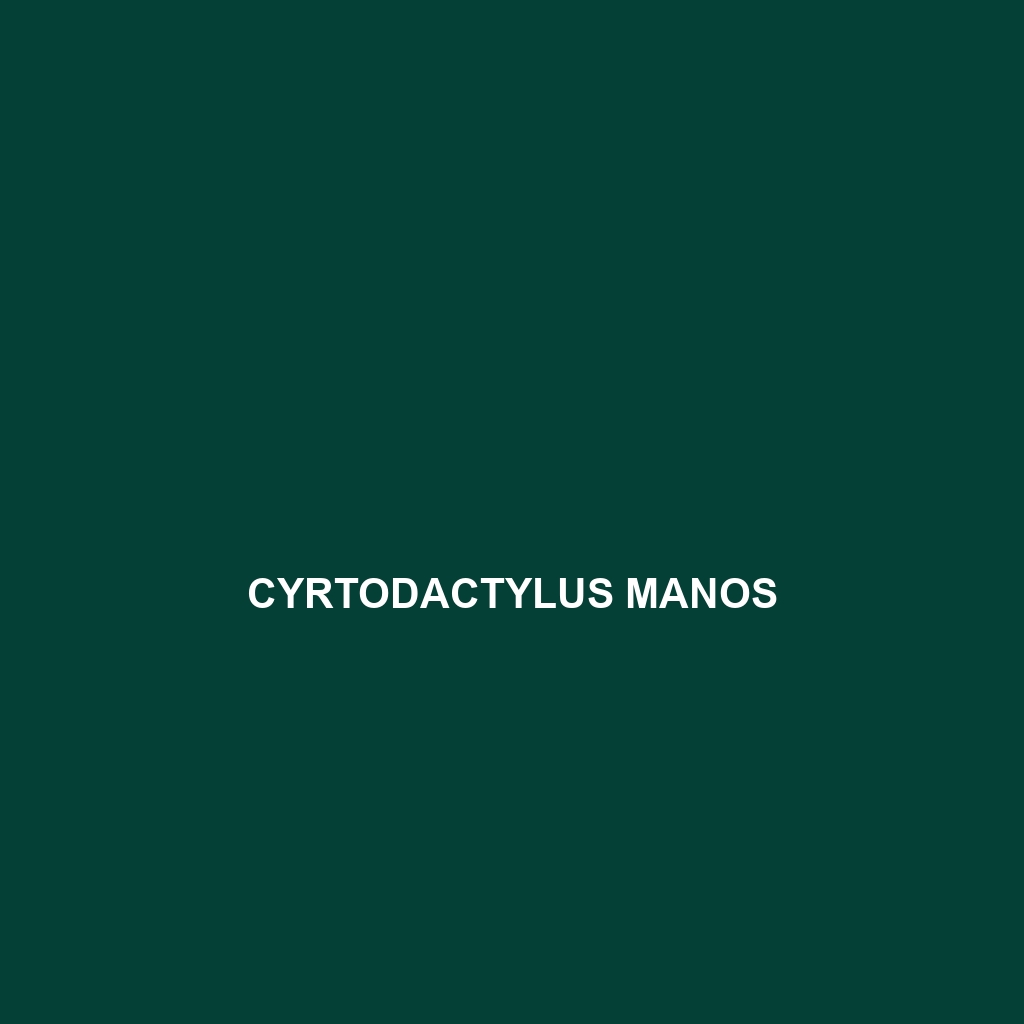Common Name: Cyrtodactylus manos
Scientific Name: Cyrtodactylus manos
Habitat:
Cyrtodactylus manos is primarily found in the lush rainforests of Southeast Asia, specifically in regions such as Malaysia and Indonesia. This gecko species thrives in humid, tropical environments characterized by dense foliage and abundant moisture. Preferring areas near streams and water sources, Cyrtodactylus manos often resides in lowland forest habitats where it can find ample cover and suitable temperatures.
Physical Characteristics:
Measuring approximately 15 to 20 centimeters in length, Cyrtodactylus manos displays a distinctive coloration that varies from a deep brown to a lighter tan, often featuring dark brown or black spots. Its elongated body and slender tail help it navigate through its arboreal habitat effectively. Notable features include its large, bulbous eyes that provide excellent night vision and its specialized adhesive toepads that allow it to climb smoothly on various surfaces.
Behavior:
Cyrtodactylus manos is primarily nocturnal, exhibiting activity during the night when it hunts for insects and other small invertebrates. Socially, these geckos tend to be solitary, though they may occasionally be seen in pairs during mating season. Their ability to camouflage with their environment makes them adept at avoiding predators, and they often use a combination of stealth and quick movements to escape threats.
Diet:
The diet of Cyrtodactylus manos consists mainly of insects such as crickets, moths, and beetles, making them essential predators within their ecosystem. Their feeding habits contribute to controlling pest populations and maintaining ecological balance. These geckos exhibit opportunistic feeding behaviors, using their keen eyesight and agility to capture prey efficiently.
Reproduction:
Reproduction in Cyrtodactylus manos typically occurs during the warm, wet months, aligning with the wet season in its habitat. Females lay two eggs per clutch, often hidden in crevices or under leaf litter to protect them from predators. After an incubation period of approximately six to eight weeks, hatchlings emerge, already exhibiting many of the distinctive characteristics of adults, including their coloration.
Conservation Status:
The current conservation status of Cyrtodactylus manos is listed as vulnerable due to habitat loss from deforestation and urbanization in Southeast Asia. Conservation efforts focused on protecting rainforest habitats are crucial for the survival of this unique gecko species.
Interesting Facts:
One fascinating aspect of Cyrtodactylus manos is its remarkable climbing ability, which is attributed to its specialized toe structures that allow it to adhere to various surfaces, including vertical walls and tree trunks. Additionally, this species has been observed to exhibit complex social interactions during the mating season, providing insights into its behavioral ecology.
Role in Ecosystem:
Cyrtodactylus manos plays a vital role in its ecosystem as an insectivore, helping to control the populations of various insect species. By maintaining these populations, the gecko indirectly supports plant health and biodiversity within its rainforest habitat. Moreover, as a prey species for larger predators, it contributes to the food web and overall ecological balance in its environment.
